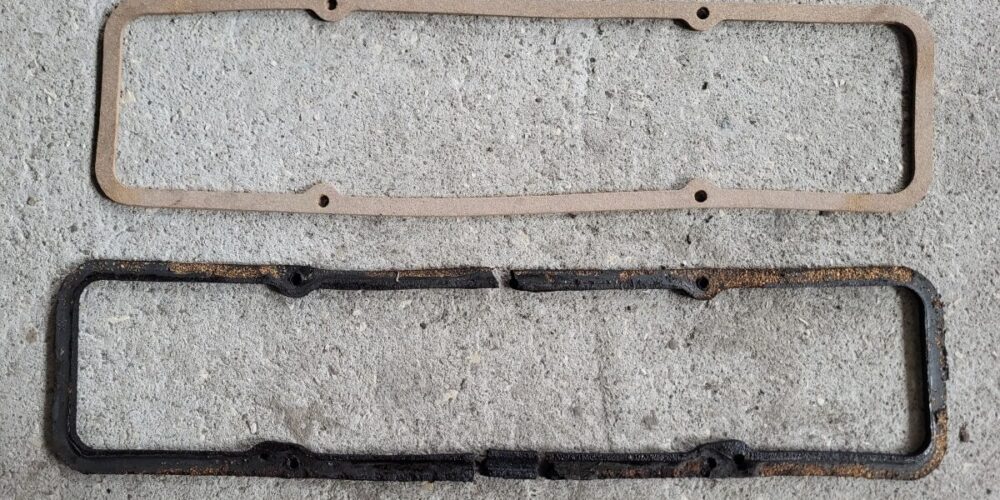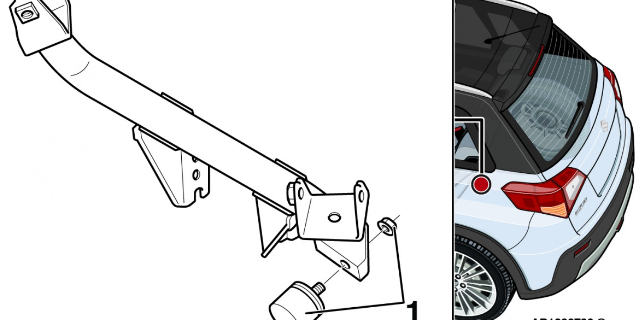The Most Common Failures in Renault Megane IV – What to Check Before Buying, What to Replace After?
Renault Megane of the fourth generation can definitely appeal to tastes, which cannot be said about its bland predecessor. The Megane IV entered the compact segment with a host of modern solutions that may turn out to be troublesome in terms of servicing.

Renault Megane IV – Available Engines and Body Styles
The fourth-generation Renault Megane has been in production since 2015, and in 2020 it underwent a subtle facelift and is still available in showrooms today. The popular compact from the French brand can be found in three body styles – hatchback (also available in a sporty R.S. version), estate (called GrandTour), and sedan (GrandCoupe).
Before the facelift, the range of available power units looked extensive. In reality, the petrol version was based on three engines with a greater number of power variants in the “civilian” versions. Thus, the range opens with a 1.2 Energy TCe engine with a power output of 100 or 130 horsepower. Then there is a 1.3 TCe engine (in variants of 102, 115, 140, and 159 HP) and a 1.6 SCe with 114 HP and its turbocharged version 1.6 TCe with 165 HP. Megane also comes in a sporty GT version and a sport R.S. version – the former has a 1.6 TCe engine with 205 HP. The R.S. version is powered by a 1.8 TCe engine available in two power variants – 280 or 300 HP.
The range of diesel units opens with a 1.5 dCi engine with 90 or 110 HP, followed by a 1.5 Blue dCi version with 95 or 115 HP, and also a 1.6 dCi with 130 or 160 HP. Before the facelift, the range was rounded off by a 1.7 Blue dCi with 149 HP and a 1.6 dCi (163 HP) from the GT version.
After the facelift, the range of available power units was significantly reduced. In the petrol variant, only the 1.3 TCe engine remains in three power versions – 115, 140, and 159 HP. The situation is even worse in the diesel engine section. Here, only the 1.5 Blue dCi with 115 HP remains. However, a plug-in hybrid with a 1.6 E-Tech engine with 160 HP has been added. The R.S. version retains the 1.8 TCe engine with 300 HP.
The Renault Megane IV is available with four gearboxes – a manual with 5 or 6 gears and an EDC automatic with 6 or 7 gears, depending on the engine version and model year.
The Most Common Failures of Renault Megane IV
Unfortunately, the Renault Megane IV is not free from the typical flaws of French cars. Thus, the most common problems that can be experienced in this compact are related to electronics. This manifests as a hanging multimedia system, Bluetooth malfunctions, sometimes the keyless system and central lock don’t work, or random error messages are displayed. Early production models have problems with engine control unit errors, which can be resolved by updating the software.
Regarding the engines, the TCe units have problems with carbon buildup, often due to improper use and servicing of the vehicles (adhering to the manufacturer’s oil change intervals), which can lead to more serious failures. The 1.2 TCe units have the biggest problem with carbon buildup. There are also minor oil losses due to leaks or consumption by these engines. In the 1.6 dCi engine, the timing chain can cause problems, although this is not a regular fault. The chain can stretch both after 60,000 kilometers or over 100,000 kilometers.
In manual transmissions, it sometimes happens that individual gears do not engage, while the EDC can generate higher operating costs. Buying a Megane IV with a 7-speed EDC automatic can be a risky idea. They require more attention from the user and can absorb it with faults, such as jerking during gear changes in normal driving or in traffic jams, where low gears are used. There can also be disturbing noises from the transmission when shifting from an odd to an even gear. In reverse, the car sometimes “kangaroos.” Besides the clumsy operation of the transmission, there are also issues with the clutch, which can wear out quite quickly.
In the suspension of the Renault Megane IV, the stabilizer links and upper bearings of the McPherson struts can give up quickly. Less frequently, there are leaks from the rear shock absorbers. Models with a rear-wheel steering axle, designated as “4Control” in Renault, are more sensitive to uneven surfaces. The more complex construction is prone to damage.
Among more unusual faults, the Renault Megane IV suffers from quickly burning out LED daytime running lights. Particularly the lower part, forming characteristic hooks, can dim or change color to warmer in one of the lamps. The hood mounting is also a peculiar issue; it is not solid and at higher speeds can come off, which is very dangerous. The hoods can flutter or vibrate strongly at highway speeds. There have been instances where the hood came off the hinges, hitting the windshield and damaging it along with the A-pillars.
Renault Megane IV – What to Check Before Buying and What to Pay Special Attention to?
Checking a potential Megane IV should start with the service book, especially if it’s a TCe engine. Manufacturer’s recommendations indicate changing the oil every 30,000 kilometers. However, to avoid carbon buildup and keep the engine healthier, the intervals should not exceed 15,000 kilometers. Long-life oils are not good for these engines. For the 1.6 diesel engine, it’s worth checking the timing chain slack. Checking the timing gear also applies to other diesel engines.
It’s worth asking the previous owner if anything was done with the hood mounting. Later models have this element slightly improved, while earlier ones do not, so it’s possible there could have been damage. Regarding electronics, it will be necessary to connect the car to a computer, which can indicate any errors.
Have you dealt with the Renault Megane IV? Share your experiences with servicing this model.










